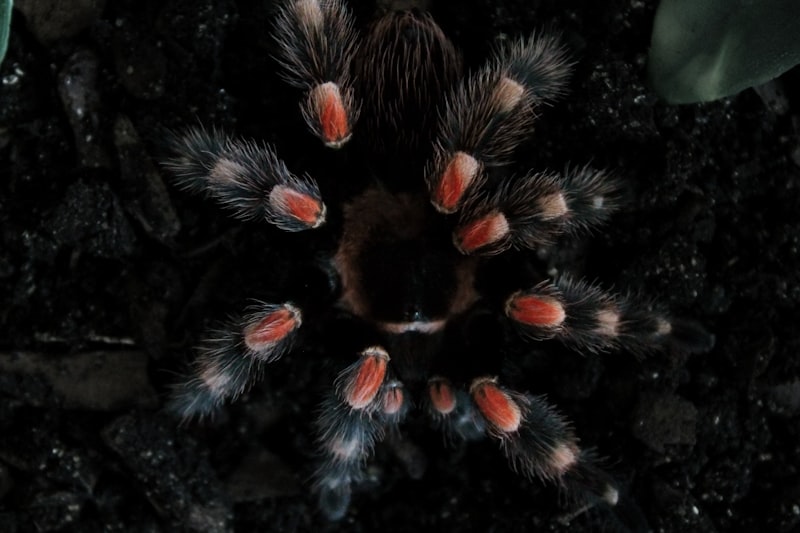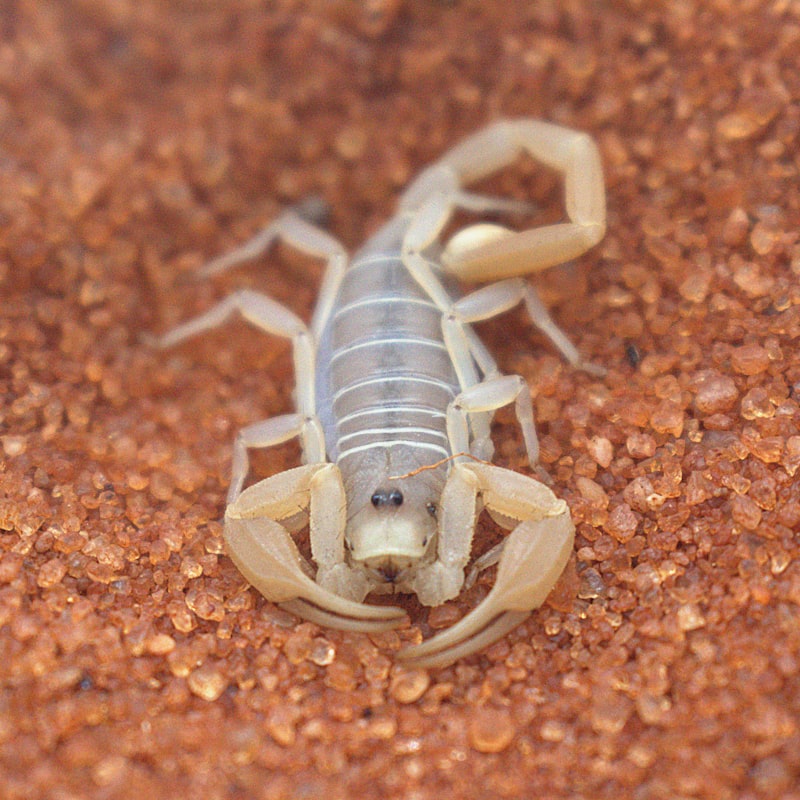Ever wondered about the mysterious world of creatures without a backbone? Invertebrates, as they’re scientifically known, comprise a vast and diverse group ranging from tiny insects to majestic octopuses. What they lack in spinal columns, they make up for in fascinating adaptations and evolutionary marvels.
One of the most captivating aspects of invertebrates is their sheer diversity. They inhabit almost every ecosystem on Earth, from the deepest oceans to the highest mountains. Insects alone make up the majority of animal species on our planet, showcasing an incredible array of forms and functions. From delicate butterflies sipping nectar to ants collaborating in intricate societies, each species plays a crucial role in its environment.
Beyond insects, invertebrates include other remarkable creatures like mollusks, arachnids, and echinoderms. Consider the humble octopus, a creature with intelligence that rivals some vertebrates. Its ability to change color and shape-shift through small spaces has fascinated scientists and storytellers alike.
Invertebrates are also masters of survival. Take the tardigrade, or water bear, capable of withstanding extreme temperatures, radiation, and even the vacuum of space. These microscopic creatures have captured the imagination of researchers studying resilience and adaptation.
Despite their often overlooked status, invertebrates are essential to ecosystem health. They pollinate plants, recycle nutrients, and serve as a critical food source for countless other animals. Their disappearance could disrupt entire food chains and ecosystems, highlighting the interconnectedness of life on Earth.
Exploring the world of invertebrates reveals a hidden realm of beauty, complexity, and resilience. From the smallest arthropod to the largest cephalopod, these creatures without a backbone challenge our understanding of life itself. So next time you encounter a spider spinning its web or a snail gliding along a leaf, remember the incredible diversity and importance of invertebrates in our world.
Mysteries of the Deep: Exploring the World of Enigmatic Invertebrates
Take the mimic octopus, a master of disguise capable of impersonating various marine creatures to evade predators. Its ability to transform its shape and coloration rivals any spy’s camouflage gear. Similarly, the immortal jellyfish defies aging by reverting back to its juvenile form after reaching maturity, a process known as transdifferentiation.

In contrast, the vampire squid, with its dark cloak-like webbing, prowls the oxygen minimum zones of the ocean, utilizing bioluminescent displays to deter threats. Its name, more evocative of folklore than science, highlights the allure of these enigmatic beings. Meanwhile, the chambered nautilus, a living fossil resembling a miniature submarine, navigates deep-sea currents using buoyancy provided by gas-filled chambers in its spiral shell.
These creatures, often overshadowed by their vertebrate counterparts, play crucial roles in marine ecosystems. From filtering nutrients to recycling organic matter, their ecological contributions are profound. Yet, their elusive nature challenges scientists to unravel the secrets hidden within the ocean’s depths.
As we continue to explore and protect these fragile ecosystems, each encounter with these invertebrate wonders sparks new questions. How do they adapt to extreme pressures and temperatures? What lessons can we learn from their resilience and survival strategies? The mysteries of the deep, embodied by these captivating invertebrates, remind us of the boundless wonders awaiting discovery beneath the waves.
Secrets of Survival: How Enigmatic Invertebrates Thrive in Diverse Environments
Take the velvet worm, for instance. Despite its soft, unassuming appearance, this invertebrate wields a potent weapon: slime. When threatened, it unleashes a sticky stream that ensnares prey or repels predators, a strategy both cunning and effective. It’s a reminder that survival often hinges on ingenuity rather than brute strength.
Meanwhile, in the darkest corners of the ocean abyss, the vampire squid reigns supreme. With its cloak-like webbing and bioluminescent organs, it navigates the depths with eerie grace. It’s a creature of adaptation, blending seamlessly into the abyssal world where few others dare to tread.
On land, the bombardier beetle stands as a testament to chemical warfare. When provoked, it mixes volatile chemicals in its abdomen, producing a scalding spray that wards off predators. This defense mechanism is a marvel of evolutionary adaptation, illustrating how invertebrates harness chemistry to survive.
In the arid stretches of desert, the camel spider scuttles across the sands with uncanny speed. Despite its name, it’s not a spider but an arachnid, equipped with powerful jaws and an appetite for smaller prey. Its ability to endure extreme temperatures and scarcity of resources is a testament to adaptation honed by millennia of evolution.
Above all, the resilience of invertebrates lies in their ability to adapt swiftly to changing environments. Whether it’s through camouflage, venom, or sheer agility, these creatures embody the art of survival against all odds. They remind us that in the intricate tapestry of nature, every thread—no matter how small or enigmatic—plays a crucial role in maintaining balance and diversity.
Beyond the Spine: Unveiling the Diversity of Enigmatic Invertebrates
Have you ever wondered about the hidden world of creatures without spines? Invertebrates, despite lacking a backbone, encompass a staggering array of life forms that play crucial roles in ecosystems worldwide. From the colorful corals of the ocean reefs to the industrious ants in our backyards, these creatures are as diverse as they are fascinating.
One of the most astonishing aspects of invertebrates is their sheer diversity. They inhabit almost every environment on Earth, from the deepest oceans to the highest mountains. Take, for example, the vibrant butterflies fluttering through meadows or the delicate spiders spinning intricate webs. Each species has evolved unique adaptations that help them thrive in their specific habitats.
Invertebrates also serve essential ecological functions. Bees, for instance, are pivotal in pollinating flowering plants, ensuring the reproduction of many food crops. Meanwhile, earthworms aerate soil and facilitate nutrient cycling, making them unsung heroes of agriculture. Without these tiny yet mighty creatures, ecosystems would struggle to function as we know them.
Moreover, their adaptations are marvels of evolutionary innovation. Consider the camouflage of leaf insects, which mimic foliage to evade predators, or the bioluminescence of deep-sea creatures illuminating the ocean depths. These adaptations not only aid in survival but also inspire biomimicry in human technology and design.
Understanding the diversity and significance of invertebrates is crucial for conservation efforts. Many species face threats such as habitat loss, climate change, and pollution. By appreciating their roles and uniqueness, we can work towards preserving their habitats and ensuring their survival for generations to come.
Invisible Architects: The Surprising Intelligence of Enigmatic Invertebrates
In the vast tapestry of nature, some of the most ingenious builders are found among creatures without backbones—yes, the invertebrates. These fascinating beings, often overlooked, showcase astonishing intelligence in their architectural feats.
Take, for instance, the tiny but mighty spider. Despite its diminutive size, a spider spins silk threads with precision that human engineers can only dream of. From intricate webs designed to ensnare prey to silk-lined burrows that offer protection, spiders are masters of structural engineering in the miniature world they inhabit.
Ants, another example of these invisible architects, exhibit remarkable cooperative behavior. Colonies of ants construct elaborate underground nests with multiple chambers and tunnels, all meticulously planned and executed. Each ant plays a specific role in the construction process, showcasing a level of organization that rivals any human construction crew.
But it’s not just about construction; these invertebrates display problem-solving abilities that challenge our understanding of intelligence. Take the leafcutter ants, for instance. They don’t just build nests; they also cultivate fungus gardens within them. This symbiotic relationship between ant and fungus requires careful maintenance and farming practices, demonstrating a sophisticated level of agricultural knowledge.
In the depths of the ocean, the humble octopus showcases its intelligence through its adept manipulation of its surroundings. Octopuses construct dens from rocks and shells, displaying a level of adaptability and resourcefulness that is truly remarkable. These dens serve not only as shelters but also as traps for unsuspecting prey—a testament to the strategic thinking of these enigmatic creatures.

The world of invertebrates is a treasure trove of astonishing intelligence and architectural marvels. From spiders spinning silk to ants building cities underground and octopuses crafting intricate dens, these creatures challenge our perception of what it means to be intelligent and creative. So, the next time you come across a spider web or an anthill, take a moment to appreciate the invisible architects at work, shaping their worlds with ingenuity and skill.
Frequently Asked Questions
How many species of invertebrates exist on Earth?
Discover the vast diversity of invertebrate species inhabiting Earth. With estimates ranging widely, scientists believe there are millions of different invertebrate species worldwide. From insects to mollusks and everything in between, these creatures play crucial roles in ecosystems and provide insights into the complexity of life on our planet.
Why are invertebrates crucial to ecosystems?
Learn why invertebrates are essential to ecosystems with our concise FAQ. Discover their crucial roles in nutrient cycling, pollination, and as food sources for larger animals.
How do invertebrates differ from vertebrates?
Learn the key differences between invertebrates and vertebrates, including their skeletal structure. Understand why invertebrates lack a backbone, contrasting with vertebrates who possess one, crucial for support and protection.
What are some examples of famous invertebrates?
Explore notable examples of invertebrates such as spiders, octopuses, snails, and butterflies. These creatures lack a backbone but exhibit diverse adaptations and ecological roles.
What are invertebrates and why are they important?
Learn about invertebrates, animals without a backbone, and discover why they are crucial. Understand their diverse roles in ecosystems, from pollination and nutrient cycling to providing food for other species. Explore the significance of studying and conserving these creatures for biodiversity and understanding our natural world.


